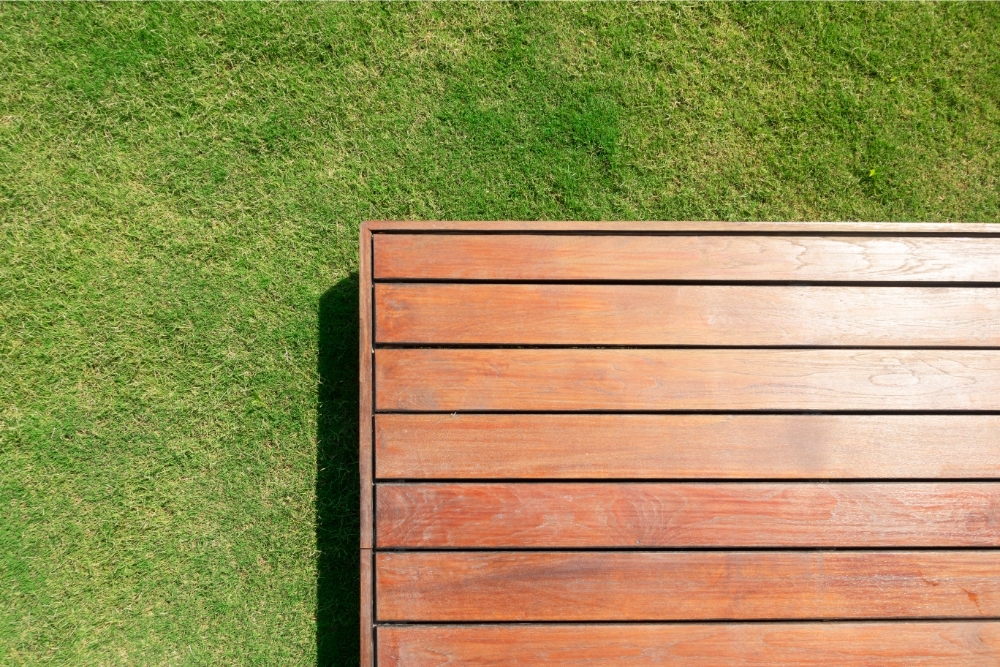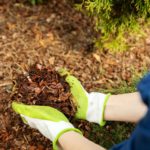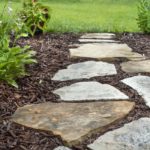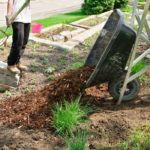The art of mulching can be quite challenging, but it’s a skill that’s essential to keeping your yard beautiful and your plants in great health. Putting mulch down is an important part of the equation, but how about removing it?
To remove mulch from your yard, start by loosening up any mulch stuck on the edges, then split it into piles. You can scoop the mulch into a waste bin, reuse it, or add it to the compost pile. It’s best to take away small amounts over the course of a couple weeks, to avoid harming your plants.
Now that we know the basics of getting rid of mulch from your yard, let’s take a closer look at your mulch removal options and what to do with the used mulch.
Should You Remove Old Mulch?
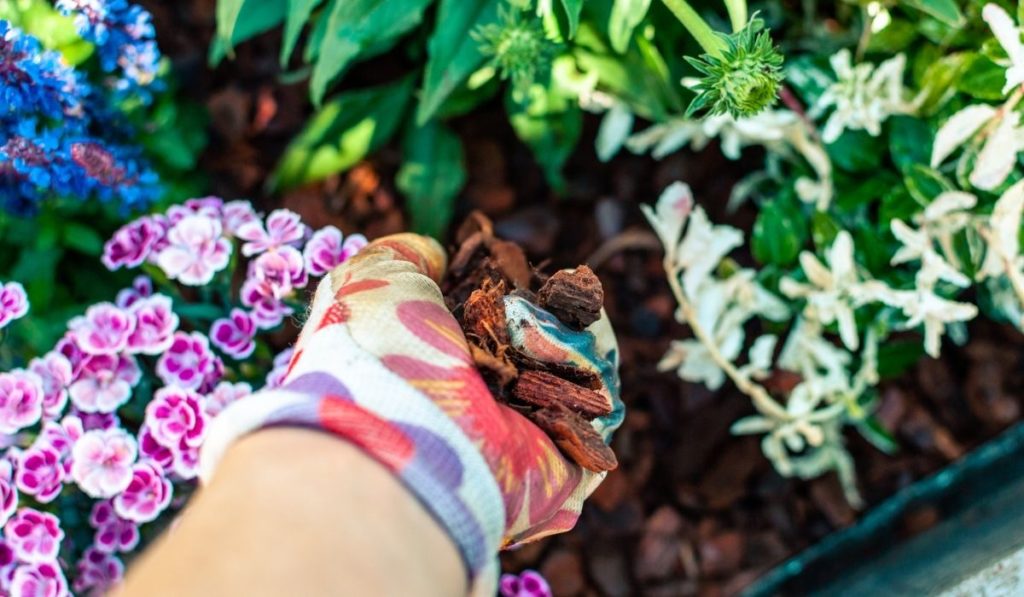
Expert gardeners argue that getting rid of old mulch every year is unnecessary as it eventually ends up creating additional work that’s quite costly. Mulch slowly breaks down, adding useful nutrients and other organic components into the soil.
Instead of getting rid of the pre-existing mulch at the beginning of spring, confirm the amount of mulch remaining from the previous year to decide how much new product you should purchase.
If your mulch layer stands well below the ideal — two inches high on flowerbeds and three inches high around tree stumps and over shrub beds — you’ll need to top off the old layer with an extra inch of new mulch to maintain the optimum level.
However, some instances call for the removal of old mulch. For example, when organic mulch sits on your yard for too long and starts growing fungi like the so-called bird’s nest fungi or artillery fungi, both of which can wreak havoc on your yard.
If you’ve been mulching perennials in your yard, you’ll also need to get rid of old mulch to prevent the mulch from building up and suffocating your plants.
How to Remove Mulch
Although mulch holds moisture in the soil and protects plants, it can also be a hotbed for bacteria, fungi, and diseases that are dangerous to your plants. To ensure your plants are in excellent health and look stunning, you may need to remove the old mulch.
First, you’ll need the following tools:
- Rake
- Tarp
- Leaf blower, preferably with battery operation so you can move around easily, like this Dewalt model (on Amazon)
- Edger
- Shovel
- Gardening gloves, preferably with a gauntlet protecting your wrists like these (on Amazon)
You should carry out this project over a couple of weeks because eliminating mulch from your yard too fast can result in trauma for the plants.
Steps For Removing Mulch From Your Yard
- Wear gardening gloves and use your hands to lift off the mulch. Strip away small amounts of mulch weekly. It’s best if you do the removal during overcast days to prevent the sunlight from damaging your plants.
- Run the blade of your edger around your yard’s perimeter to loosen mulch stuck on the edges.
- Use the rake to split the mulch into clumps and then shape the clumps into piles. Carefully use the rake around plants, leaving some inches of space between the rake and the plant stem. Also, try to leave as much soil in place as possible.
- Use the shovel to scoop out the mulch piles and place them on the tarp.
- While still wearing the gloves, brush mulch away from the bottom of your plants and then collect the mulch and put it on the tarp.
- Use the leaf blower to blast away the tiny bits of mulch that you have trouble picking up. Don’t use the leaf blower for too long as it can get very hot, causing the soil to dry up and blow away.
- Discard the old mulch in a waste bin. If you used the mulch you are removing as a winter cover, sort out the organic components, including chipped leaves, and put them into a compost pile.
How to Dispose of Wood Mulch vs. Dyed Mulch
There are different environmentally conscious ways to dispose of wood and dyed mulch. Here’s how you can safely do away with both of them:
Disposing of Wood Mulch
You can dispose of untreated wood mulch naturally through composting, though many gardening gurus caution against adding wood chips to compost.
They claim that the wood chips can tie up oxygen responsible for breaking down matter. There is some truth to this, but there are two ways to address the situation:
- You can add more nitrogen-rich sources to your compost pile. Experts recommend keeping the carbon to nitrogen ratio at 30:1. Considering that you’ll be adding wood mulch that ties up nitrogen, it will be best to increase the nitrogen ratio to create a balance.
- You can let the wood mulch decay in place if it surrounds your deep-rooted plants. The upper layer of the soil will lack nitrogen, but the plants’ roots will get nitrogen present deeper in the soil.
Disposing of Dyed Mulch
Based on where you sourced it or what you used to dye it, dyed much can be toxic to your plants.
Dyed mulches are mainly made from recycled wood. It might seem like an environmentally friendly option, but in reality, it isn’t.
Mulch made from recycled wood could contain traces of Chromated Copper Arsenate (CCA), which poses a danger to plants, animals, and people. For that reason, dyed mulch isn’t safe for composting.
To do away with dyed mulch, you need to check your local municipal guidelines for mulch disposal, or you can wrap it and take it to the nearest waste management facility.
Can You Reuse Mulch?
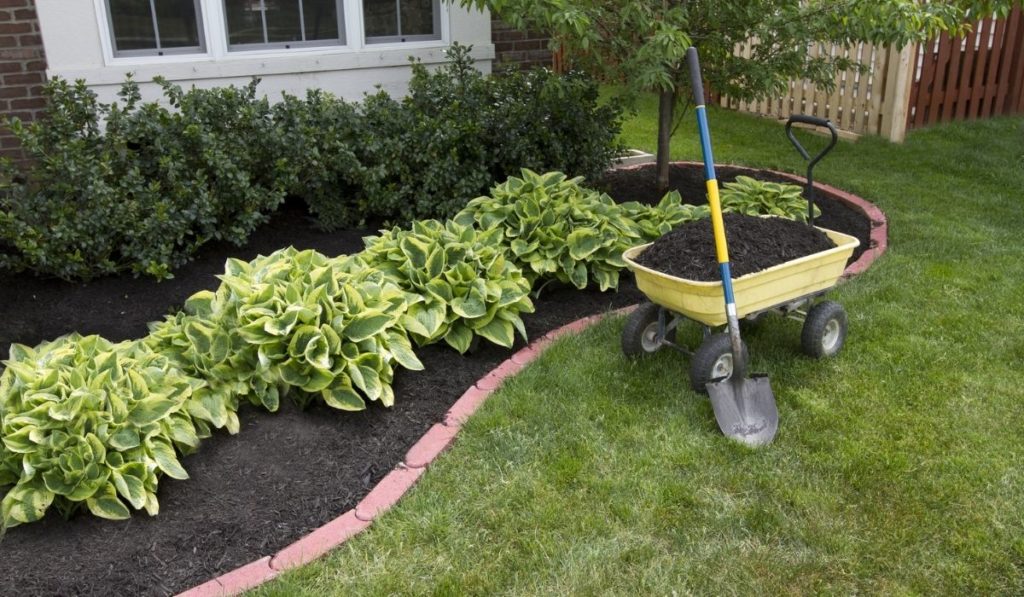
Old mulch might look unappealing, but you shouldn’t take its value for granted. Old mulch can serve as an exceptional natural and organic slow-release fertilizer. Mulch is biodegradable, so there’s no need to dispose of it.
When added to the compost pile, old mulch releases nutrients that plants require for healthy growth and rapid development. It also covers the soil and protects it from harsh weather conditions.
Additionally, old mulch can act as a barrier to weeds while also helping the soil retain moisture.
As long as the old mulch doesn’t sprout fungi and maintains its size and texture, feel free to reuse it.

